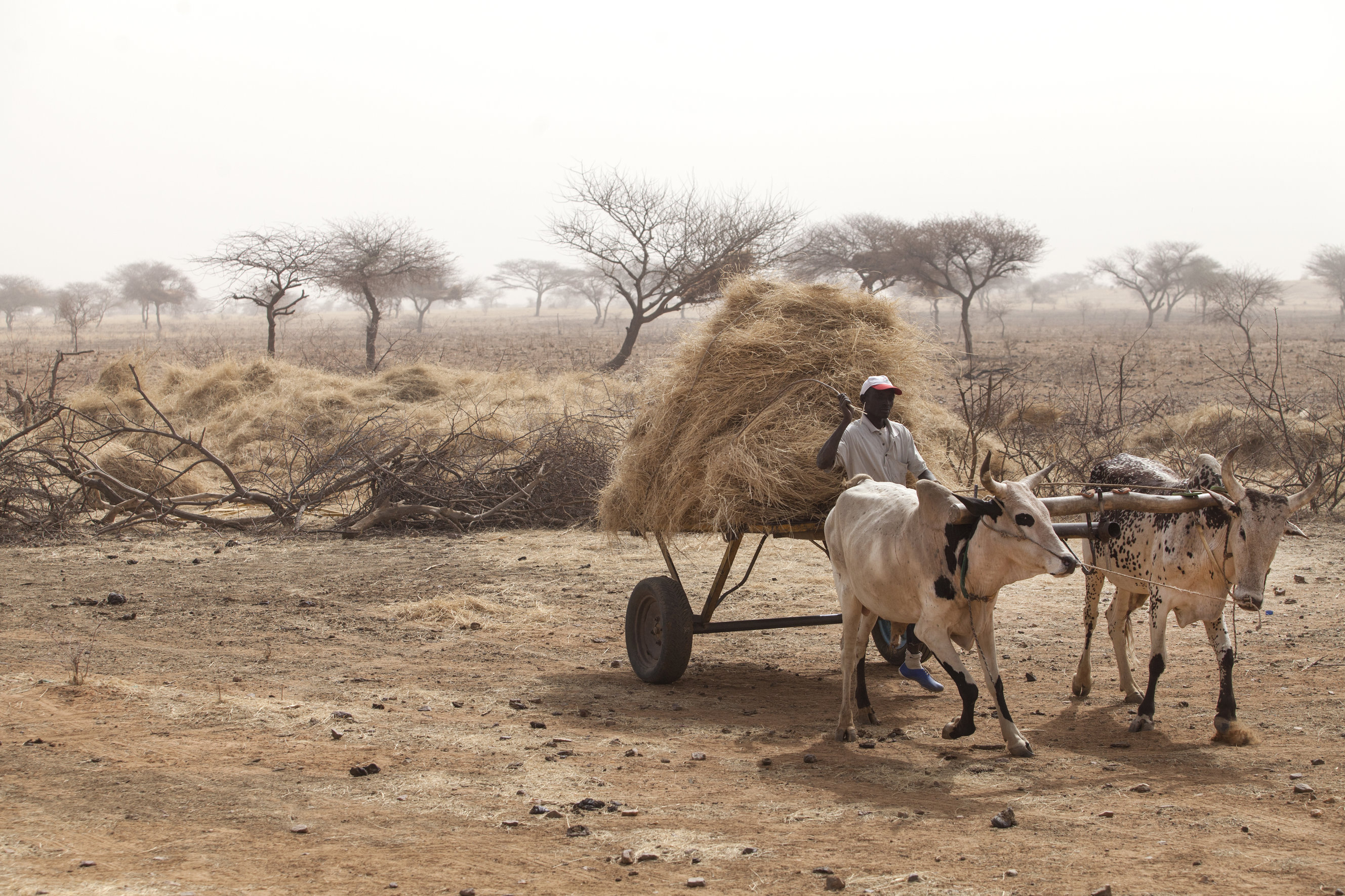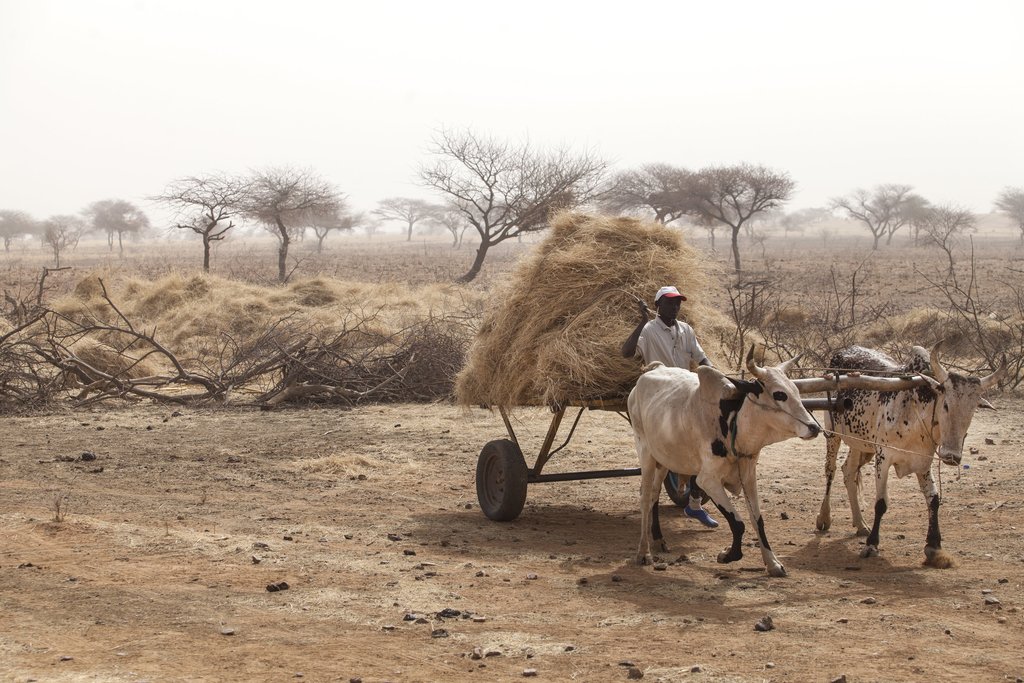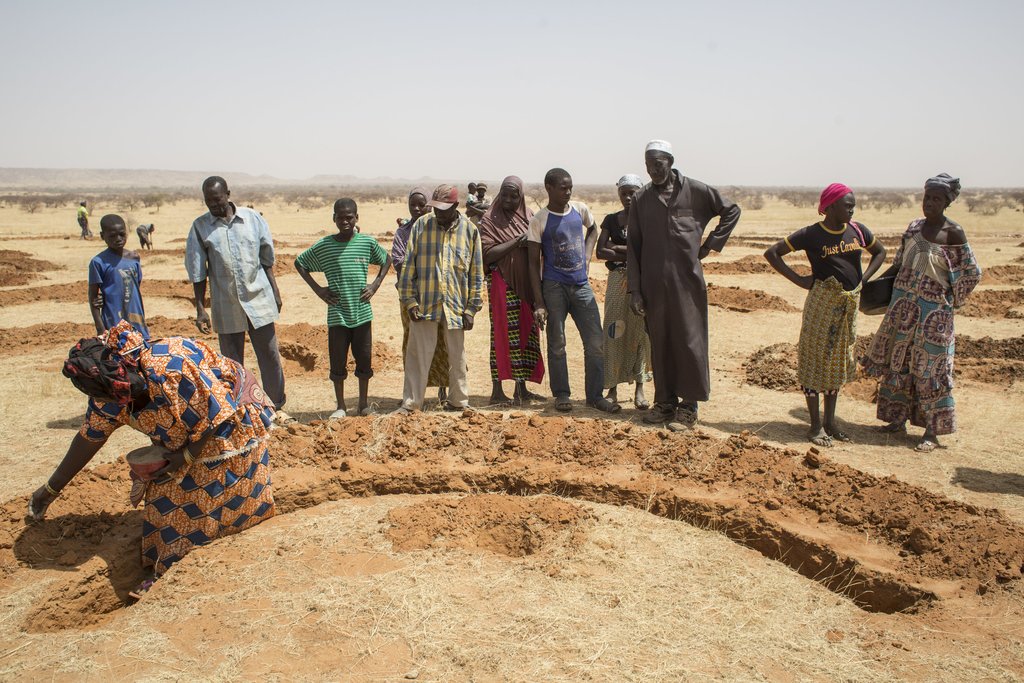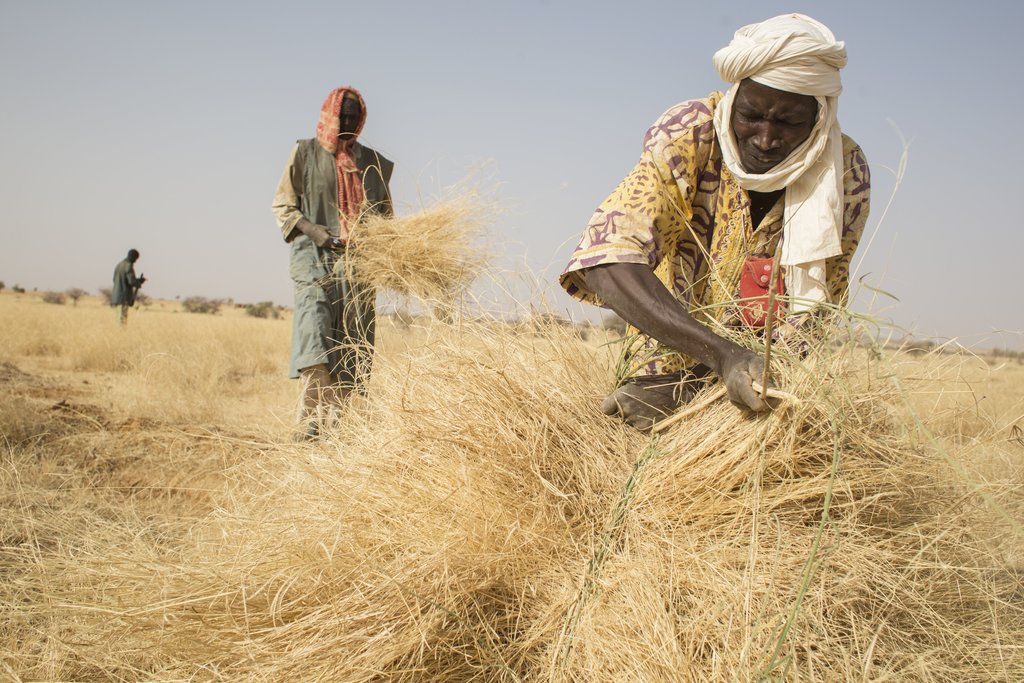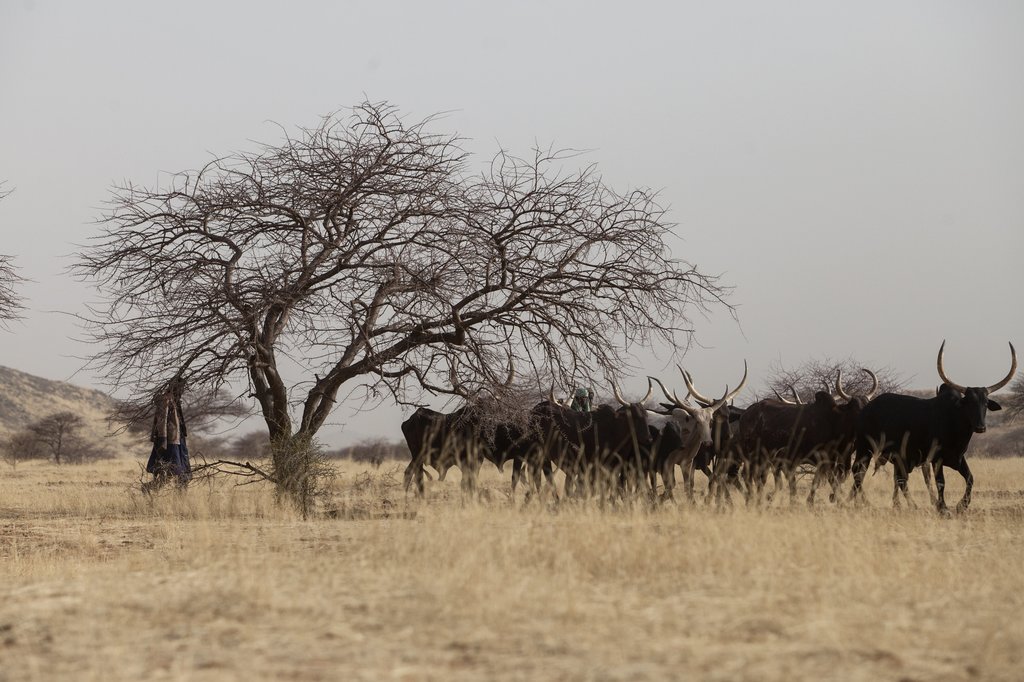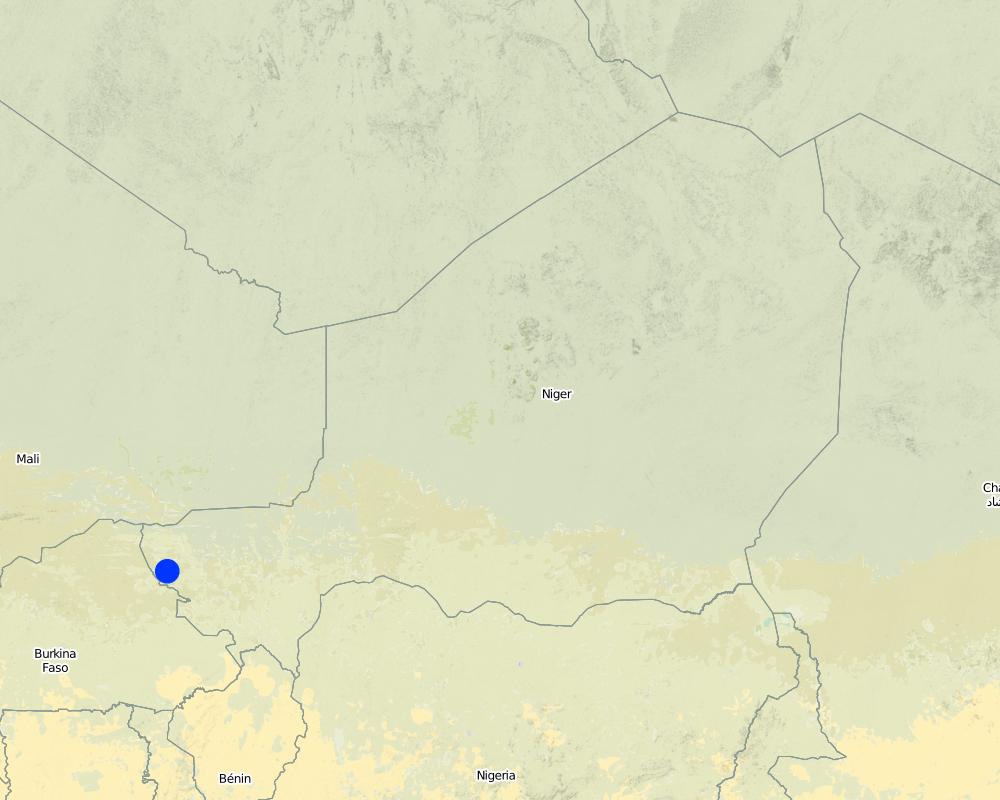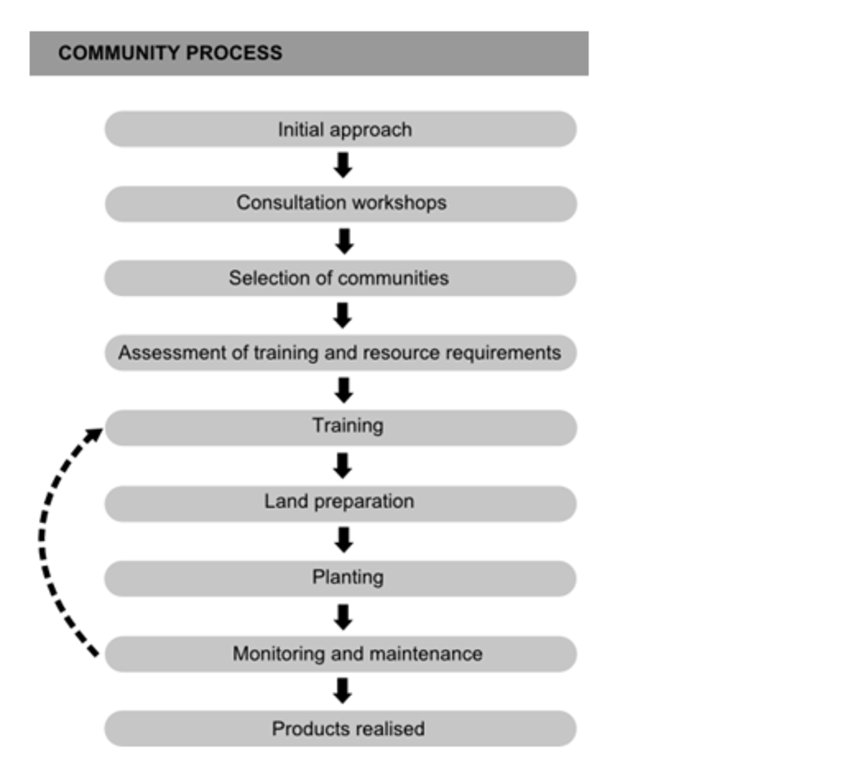Community participation in large-scale land restoration for Africa’s Great Green Wall programme [Niger]
- Création :
- Mise à jour :
- Compilateur : Vivian Onyango
- Rédacteur : –
- Examinateur : Rima Mekdaschi Studer
approaches_2909 - Niger
- Résumé complet en PDF
- Résumé complet en PDF pour impression
- Résumé complet dans le navigateur
- Résumé complet (non formaté)
- La participation communautaire à la restauration des terres à grande échelle pour le programme de la Grande Muraille Verte d’Afrique: 2 novembre 2021 (inactive)
- La participation communautaire à la restauration des terres à grande échelle pour le programme de la Grande Muraille Verte d’Afrique: 4 juillet 2018 (inactive)
- Community participation in large-scale land restoration for Africa’s Great Green Wall programme : 13 mai 2018 (inactive)
- Community participation in large-scale land restoration for Africa’s Great Green Wall programme : 26 avril 2018 (inactive)
- Community participation in large-scale land restoration for Africa‘s Great Green Wall programme in Niger.: 24 avril 2018 (inactive)
- La participation communautaire à la restauration des terres à grande échelle pour le programme de la Grande Muraille Verte d’Afrique: 21 août 2024 (public)
Voir les sections
Développer tout Réduire tout1. Informations générales
1.2 Coordonnées des personnes-ressources et des institutions impliquées dans l'évaluation et la documentation de l'Approche
Spécialiste GDT:
Sacande Moctar
moctar.sacande@fao.org
Forestry Policy and Resources Division (FOA)
Italie
Nom du projet qui a facilité la documentation/ l'évaluation de l'Approche (si pertinent)
FAO-Action Against DesertificationNom du ou des institutions qui ont facilité la documentation/ l'évaluation de l'Approche (si pertinent)
Food and Agriculture Organization of the United Nations (FAO) - Italie1.3 Conditions relatives à l'utilisation par WOCAT des données documentées
Le compilateur et la(les) personne(s) ressource(s) acceptent les conditions relatives à l'utilisation par WOCAT des données documentées:
Oui
2. Description de l'Approche de GDT
2.1 Courte description de l'Approche
The Food and Agriculture Organization of the United Nations (FAO) has been using a participatory approach to implement large-scale restoration of degraded land in the Sahel. Communities have been central to the programme. In the framework of the Great Green Wall initiative, adapted and useful native tree species, shrubs, and fodder grasses are planted in agro-sylvo-pastoral land. This is response to community needs and preferences while ensuring that the species and varieties are all ecologically suitable.
2.2 Description détaillée de l'Approche
Description détaillée de l'Approche:
The approach is implemented under FAO's Action against Desertification (AAD) programme in the Great Green Wall for the Sahara and the Sahel Initiative (GGWSSI). This is Africa's flagship initiative to combat the effects of climate change and desertification, and to address food insecurity and poverty. It brings together more than 20 African countries with international agencies, research institutes, civil society and grassroots organizations. Through the GGWSSI, the vision is a mosaic of sustainable land use practices and productive landscapes stretching across North Africa, the Sahel and the Horn.
Community participation in the Great Green Wall restoration initiative is through a people-centred approach to rangeland management that puts communities at the heart of efforts. It focusses on plant species that support their livelihoods. Specifically these are a selection of well-adapted indigenous trees, shrubs and fodder grasses with proven resilience to drought and usefulness in restoration. Village communities decide on which areas to plant and on the species that they can utilise for food, for fodder, and for medicines. There are also plants that produce economically valuable goods for local, national and even international markets, such as gum arabic (from Acacia senegal) for example.
Technically, AAD supports the implementation of land restoration activities through provision of equipment, and by strengthening the technical and functional capacities of individuals, communities, and organizations in restoration techniques and sustainable land management.
The three main objectives of this approach are:
a) Poverty alleviation;
b) Ending hunger; and
c) Improving resilience to climate change.
The restoration approach is based on a five-step model:
• Communities: needs and requirements for restoration are determined through in-depth consultations with communities.
• Research: good quality seed is made available for the propagation of economically viable, locally adapted and biodiverse vegetation.
• Operational procedure: efficient operational restoration processes are ensured, including land preparation and management, assisted natural regeneration and planting.
• Monitoring: field performance of species are evaluated, as well as communal activities such as maintenance and management of restored areas.
• Capacity development: village technicians’ capacities are upgraded in forest seed collecting and nursery techniques, planting, maintenance and management of restored areas, and development of plant products, marketing, and local business management.
2.3 Photos de l'approche
Remarques générales concernant les photos:
The photos were taken under the FAO project GCP/INT/157/EC: Action Against Desertification is an initiative of the African, Caribbean and Pacific Group of States (ACP) to promote sustainable land management and restore drylands and degraded lands in Africa, the Caribbean and the Pacific, implemented by FAO and partners with funding from the European Union in the framework of the 10th European Development Fund (EDF).
2.4 Vidéos de l'Approche
Commentaire, brève description:
https://www.youtube.com/watch?v=qVcMSeXZnJI
Over the next decade, 50 million people may be displaced by desertification - the result of climate change and the depletion of natural resources. Action Against Desertification, an initiative of the African, Caribbean, and Pacific Group of States is implemented by the Food and Agriculture Organization of the United Nations with the financial contribution of the European Union. It aims to restore the productivity of degraded forests and landscapes and enhance the resilience of people to climate change in 6 Great Green Wall countries in Africa as well as Haiti in the Caribbean and Fiji in the Pacific.
Date:
02/12/2015
Lieu:
Rome
Nom du vidéaste:
© FAO
Commentaire, brève description:
https://www.youtube.com/watch?v=prl1eaSvQCQ&feature=youtu.be
Land restoration in the Sahel is making degraded areas productive again, providing economic opportunities in a region where migration has become a tradition. Under FAO’s “Action Against Desertification” programme, these efforts are being expanded to six African countries. Land degradation around the Sahara is not yet irreversible.
Date:
18/07/2016
Lieu:
Rome
Nom du vidéaste:
© FAO
2.5 Pays/ région/ lieux où l'Approche a été appliquée
Pays:
Niger
Région/ Etat/ Province:
Tillabery, Dosso and Tahoua
Autres spécifications du lieu :
In Niger, the GGWSSI covers all the eight regions of the country. Currently FAO’s Action Against Desertification project works in the three regions of Tillabery, Dosso and Tahoua, though the approach is expanding to the remaining five regions.
Commentaires:
The AAD land restoration approach has been successfully implemented with trans-boundary interventions in Niger, Burkina Faso, and Mali. For this documentation, the focus is on Tera, Niger.
Map
×2.6 Dates de début et de fin de l'Approche
Indiquez l'année de démarrage:
2013
Si l'année précise est inconnue, indiquez approximativement quand l'Approche a démarré:
il y a moins de 10 ans (récemment)
2.7 Type d'Approche
- fondé sur un projet/ programme
2.8 Principaux objectifs de l'Approche
Key elements and aims of this approach include:
• Planting the right species in the right place.
• Promoting the use of quality native forest and fodder seeds for restoration.
• Ensuring that a wide range of useful plant species is made available.
• Managing natural regeneration of species and planted areas through village management committees.
• Updating a species database for gene-pool traceability, monitoring, reporting and for future uses of data and information.
2.9 Conditions favorisant ou entravant la mise en œuvre de la(des) Technologie(s) appliquée(s) sous l'Approche
normes et valeurs sociales/ culturelles/ religieuses
- favorise
The approach is people-centred, and builds on traditional management of land, traditional ecological knowledge and techniques such as “half-moons” (demi-lunes in French) for rainwater harvesting that facilitate improved plant establishment.
disponibilité/ accès aux ressources et services financiers
- favorise
Individuals can acquire finance to buy seeds. On community land, finance may be needed to lease land for production of plant varieties, or for hiring labour to take care of seedlings.
cadre institutionnel
- favorise
Better organization at local level enhances community participation and commitment to achieve interventions at large-scale/community level.
collaboration/ coordination des acteurs
- favorise
There are various levels of collaboration needed for example in establishing which land should/ can be used, in seed selection based on defined needs, and also for the provision of labor. Fundamentally, collaboration is key to agreements to achieve the desired objectives.
cadre juridique (régime foncier, droits d'utilisation des terres et de l'eau)
- favorise
Securing access rights to land and water resources is a motivation for investing in reforestation.
cadre politique
- favorise
National level policies can protect and ensure supply of seeds as well facilitate access to natural resources such as land. Additionally, policies such as those in support of Great Green Wall activities create an enabling environment within which these activities can be supported.
gouvernance foncière (prise de décisions, mise en œuvre et application des décisions)
- favorise
Similar to legal framework above.
connaissances sur la GDT, accès aux supports techniques
- favorise
Knowledge around SLM contributes to maintenance and management of restored areas, thus ensuring sustainability of activities. The programme has integrated existing/traditional SLM activities such as zaï (wide planting pits)/half-moons in capturing, concentrating and storing water thus keeping soils moist and improving the chances of good plant growth in a very dry environment.
marchés (pour acheter les intrants, vendre les produits) et prix
- favorise
Market access and increasing economic capacities of communities can enable active involvement in restoration especially when plant products can earn income thus facilitating local business.
charge de travail, disponibilité de la main-d'œuvre
- favorise
Availability of labor facilitates activities such as forest seed collecting, nursery activities, planting, maintenance and management of restored areas. Most of the work is done by women who prepare the land and take the lead in planting.
3. Participation et rôles des parties prenantes impliquées dans l'Approche
3.1 Parties prenantes impliquées dans l'Approche et rôles
- exploitants locaux des terres / communautés locales
Total project beneficiaries are currently 116,000 people (over half are women) Age varies from 15 to 70 years. Participants are villagers including farmers, herders, traditional healers and herbalists. Each intervention village has a village management committee set up for GGW implementation. They contribute land and labour, and village technicians are trained in large-scale degraded land restoration techniques so that they can be self-sufficient at the end of the funding.
1. Defining needs, preferences of species and objectives for land restoration in degraded areas. 2. Trained in the collection of seeds and in how to produce seedlings in village nurseries. 3.The communities involved also participated in the regular monitoring and evaluation of plots. 4. Participating in workshops including agreeing on work plans 5. Communities were also a source of rich traditional ecological knowledge 6. Supporting projects through in-kind contributions of labour and land 7. Representation in the steering committee
- organisations communautaires
Each intervention village has a village management committee set up for GGWSSI activities.
- Contributed land, labor and village technicians to be trained in large-scale land restoration techniques geared to self-sufficiency at the end of project life. Managing intervention sites including products such as fodder. Collaborating with national and local administrations.
- Spécialistes de la GDT/ conseillers agricoles
Support in identification of land needed for restoration, seeds, and management of restoration.
- chercheurs
National seed centres.
1. Address the availability of good quality seeds for collection.
2. Ensure genetic diversity reflecting varieties of native species.
- ONG
Local NGOs and CBOs.
Local NGO's were trained in land restoration activities.
NGOs were also instrumental in discussions on scaling up the approaches and policy support for mainstreaming sustainable land management.
- secteur privé
Supplies of equipment and materials needed for restoration activities.
Mainly business related to procurement of goods and services.
- gouvernement local
Local administration and national governments in the respective countries.
1. Provide technical management and management of the operational team.
2. Mobilization of communities.
3. Part of the steering committee.
- gouvernement national (planificateurs, décideurs)
1. Ministry of Environment and Sustainable Development.
2. National Agency of the Great Green Wall.
3. National Forestry Seed Centre.
4. Local authorities (i.e.Town halls/ Mairies in French) involved in Tillabery, Dosso and Tahoua regions.
- organisation internationale
Royal Botanical Garden, Kew.
Technical support; botanical knowledge and information resources, and identifying priority species for the Great Green Wall.
3.2 Participation des exploitants locaux des terres/ communautés locales aux différentes phases de l'Approche
| Participation des exploitants locaux des terres/ communautés locales | Spécifiez qui était impliqué et décrivez les activités | |
|---|---|---|
| initiation/ motivation | interactive | Communities’ local knowledge, needs and aspirations were the backbone of the project. Communities were extensively consulted on species identification and prioritization based on needs, including speed of production, personal knowledge and aspirations. This was through questionnaires and village workshops. Commitment and buy-in from the community was also a prerequisite for activities to start, as they had to commit to contribute land and in-kind labour. Selection of villages for restoration was based on, amongst other things, motivation and commitment by communities to participate in restoration activities, and community-based structures and organizations. |
| planification | interactive | Extensive planning was done with communities before implementation, e.g. to agree on planting times, use of traditional techniques and land preparation. |
| mise en œuvre | interactive | Implementation was done actively with communities who volunteered traditional knowledge as well as labour to the activities. This built on the initial procedures where species were selected and prioritized; planning of activities; and later labour in preparation of land, setting-up nurseries and transplanting. |
| suivi/ évaluation | interactive | Monitoring and field data collection of survival and growth of seedlings were carried out by trained village technicians in collaboration with the communities and technical institutions. |
3.3 Diagramme/ organigramme (si disponible)
3.4 Prises de décision pour la sélection de la Technologie/ des Technologies
Indiquez qui a décidé de la sélection de la Technologie/ des Technologies à mettre en œuvre:
- tous les acteurs concernés dans le cadre d'une approche participative
Expliquez:
This is a local initiative that uses traditional ecological knowledge and multi-purpose plant species (of known benefits to the local communities) for restoration.
Community participation, lifestyles and preferences and a careful analysis of ecological landscapes are carefully considered and then matched to suitable interventions. This similar approach has been applied by other projects in the GGWSSI region however although has not often been formally disseminated to wider audiences.
Spécifiez sur quelle base ont été prises les décisions:
- l'évaluation de connaissances bien documentées en matière de GDT (prises de décision fondées sur des preuves tangibles)?
- les résultats de recherches?
- expériences et opinions personnelles (non documentées)
4. Soutien technique, renforcement des capacités et gestion des connaissances
4.1 Renforcement des capacités/ formation
Une formation a-t-elle été dispensée aux exploitants des terres/ autres parties prenantes?
Oui
Spécifiez qui a été formé:
- exploitants des terres
- personnels/ conseillers de terrain
Si pertinent, spécifiez le genre, l'âge, le statut, l'ethnie, etc.
100 small-scale farmers were trained in 2017, in Natural Assisted Regeneration techniques and 40 farmers were trained in forest and fodder seed collection and the production of seedlings in village nurseries and in the management of planted sites.
Formats de la formation:
- cours
Thèmes abordés:
Technical training was provided to villages through formal modules in how to collect quality seeds in defined seed zones. The training was provided by the national forest seed centres. The training was in seedling production and participatory forest management. Other areas covered included; added-value and the development of plant products (non-timber forest products), marketing and local business management to support income generation.
Commentaires:
Apart from the restoration technical areas covered above, additional areas of training included; improving adult literacy, family health and nutritional standards. This was done together with specialized rural sector developers.
4.2 Service de conseils
Les exploitants des terres ont-ils accès à un service de conseils?
Oui
Spécifiez si le service de conseils est fourni:
- dans les champs des exploitants?
- dans des centres permanents
- workshops
Décrivez/ commentez:
To re-introduce plants for large-scale restoration, effective use of seeds of wild species demands sufficient biological and technical knowledge about a large number of species to allow for collection, storage and germination of seeds and establishment of seedlings. In this approach therefore, use was made of the technical know-how of RBG Kew and their partnership with forest seed centres that guided collection of quality seeds.
4.3 Renforcement des institutions (développement organisationnel)
Des institutions ont elles été mises en place ou renforcées par le biais de l'Approche?
- oui, beaucoup
Spécifiez à quel(s) niveau(x), ces institutions ont été renforcées ou mises en place:
- local
- régional
- national
Décrivez l'institution, ses rôles et responsabilités, ses membres, etc.
Institutions: National government; NGOs, CBOs.
Support to the national government which is the national agency for the GGW is the entry point. Through them and based on national objectives, the project progresses to a decentralized level. At the national level, capacities have been improved on monitoring and evaluation techniques; seed identification and selection and handling.
Local level: these are the implementing partners and work on the ground. Their capacities have been improved on seed selection and restoration techniques, and on data collection
Regional level: more collaboration, coordination and knowledge sharing on the GGW initiatives as well as peer-to-peer learning.
Précisez le type de soutien:
- financier
- renforcement des capacités/ formation
- équipement
Donnez plus de détails:
Equipment: mainly for land preparation for planting and non-timber forest product processing.
4.4 Suivi et évaluation
Le suivi et l'évaluation font ils partie de l'Approche? :
Oui
Commentaires:
Regular monitoring is carried out by village communities involved in the restoration exercise. The activities include assessing seedling survival and growth, and the area planted.
Si oui, ce document est-il destiné à être utilisé pour le suivi et l'évaluation?
Non
4.5 Recherche
La recherche a-t-elle fait partie intégrante de l’Approche?
Oui
Spécifiez les thèmes:
- sociologie
- économie/ marketing
- écologie
Donnez plus de détails et indiquez qui a mené ces recherches:
Through a questionnaire, communities define their needs and preferences for species, and the objectives of land restoration in their selected agro-sylvo-pastoral degraded lands. Results of this consultation are fed back to them after analyses by the project team (researchers, plant experts, seed centres) for the feasibility, suitability and availability of the requested species. This creates common agreement on interventions, priorities and implementation plans, with roles and responsibilities from the communities as well as from the technical teams.
1. Sociology: prior research was done on social diversity of village communities in areas such as gender, age, and professions to decide on village selection, but also to ensure balance.
2. Economics/marketing: this was multi-faceted - on the one hand looking at community economic needs and priorities, but also on how to add value to non-timber forest products. The plant-use data received from respondents were classified according to the Economic Botany Data Collection.
These helped in deciding and prioritizing species according to community needs.
3. Ecology: the GGW initiative is typically aimed at drylands with challenges of aridity. Thus the ecology was studied to identify suitable plant species that would thrive under these conditions - in combination with traditional SLM/ water harvesting technologies that have been developed to overcome moisture deficits.
The selected species was further examined in laboratories to check their suitability for dryland environments and thereafter to ensure good quality and genetically diverse seeds are used.
5. Financement et soutien matériel externe
5.1 Budget annuel de la composante GDT de l'Approche
Si le budget annuel précis n'est pas connu, indiquez une fourchette:
- 100 000-1 000 000
Commentez (par ex. principales sources de financement/ principaux bailleurs de fonds):
Action Against Desertification is implemented by FAO and partners with funding from the European Union in the framework of the 10th European Development Fund (EDF). The GGWI under AAD in Niger is funded up to around 1.5m USD for the four years of the project.
5.2 Soutiens financiers/ matériels fournis aux exploitants des terres
Les exploitants des terres ont-ils reçu un soutien financier/ matériel pour la mise en œuvre de la Technologie/ des Technologies?
Oui
Si oui, spécifiez le(s) type(s) de soutien, les conditions et les fournisseurs:
Finances are needed for purchasing equipment; seeds were also provided; seed testing was carried out to establish appropriate type/species of those chosen by the communities.
5.3 Subventions pour des intrants spécifiques (incluant la main d'œuvre)
- main d'œuvre
| Dans quelle mesure | Spécifiez les subventions |
|---|---|
| en partie financé | Local communities shared some tasks such as during planting period the project provided lunch. |
- équipement
| Spécifiez les intrants subventionnés | Dans quelle mesure | Spécifiez les subventions |
|---|---|---|
| machines | en partie financé | Provided such as hand tools, and carts for transportation. |
| outils | en partie financé | Tools for SLM/WH structures and planting. |
- intrants agricoles
| Spécifiez les intrants subventionnés | Dans quelle mesure | Spécifiez les subventions |
|---|---|---|
| semences | en partie financé | Training was provided in a collection of native forest seeds that were then bought from them (communities thus earning an income). |
| Organic manure | Training to do and collect composts. | |
- matériaux de construction
| Spécifiez les intrants subventionnés | Dans quelle mesure | Spécifiez les subventions |
|---|---|---|
| pierres | en partie financé | For storage facilities. |
Si la main d'œuvre fournie par les exploitants des terres était un intrant substantiel, elle était:
- récompensée avec un autre soutien matériel
Commentaires:
In partnership with WFP there was collaboration on food for assets and incentives from the project such as trainings on preparation of vegetable gardens..
5.4 Crédits
Des crédits ont-ils été alloués à travers l'Approche pour les activités de GDT?
Non
5.5 Autres incitations ou instruments
D'autres incitations ou instruments ont-ils été utilisés pour promouvoir la mise en œuvre des Technologies de GDT?
Oui
Si oui, spécifiez:
Functional capacity building village communities for example in management of restoration sites and development of forest products
6. Analyses d'impact et conclusions
6.1 Impacts de l'Approche
Est-ce que l'Approche a autonomisé les exploitants locaux des terres, amélioré la participation des parties prenantes?
- Non
- Oui, un peu
- Oui, modérément
- Oui, beaucoup
The project supports communities to improve the productivity of their land in direct consultation with them while benefiting from training on recording changes in the diversity of biomass in community plots and lands.
Est-ce que l'Approche a permis la prise de décisions fondées sur des données probantes?
- Non
- Oui, un peu
- Oui, modérément
- Oui, beaucoup
Substantial improvement has already been recorded with respect to the state of land in the last two years.
Est-ce que l'Approche a aidé les exploitants des terres à mettre en œuvre et entretenir les Technologies de GDT?
- Non
- Oui, un peu
- Oui, modérément
- Oui, beaucoup
Training was provided in various aspects such as seed selection and collection.
Est-ce que l'Approche a amélioré la coordination et la mise en œuvre de la GDT selon un bon rapport coût-efficacité?
- Non
- Oui, un peu
- Oui, modérément
- Oui, beaucoup
The project is not funding all aspects, though building sustainability through the direct capacity development and participation of communities.
Est-ce que l'Approche a mobilisé/ amélioré l'accès aux ressources financières pour la mise en œuvre de la GDT?
- Non
- Oui, un peu
- Oui, modérément
- Oui, beaucoup
1. Village technicians have been used by other projects in the area in SLM and also by the government while receiving remuneration. 2. Communities are able to sell indigenous seeds for restoration to other projects in the region, and to the government.
Est-ce que l'Approche a amélioré les connaissances et les capacités des exploitants des terres pour mettre en œuvre la GDT?
- Non
- Oui, un peu
- Oui, modérément
- Oui, beaucoup
Through trainings and capacity development e.g. on large-scale land preparation for planting and seed selection.
Est-ce que l'Approche a amélioré les connaissances et les capacités des autres parties prenantes?
- Non
- Oui, un peu
- Oui, modérément
- Oui, beaucoup
1. Governments; training of technicians in specialized tools, training in monitoring and evaluation of SLM and in restoration impacts. 2. CBOs and local administrations: regional organizations such as CILSS-Agryhmet were also trained in the above.
Est-ce que l'Approche a construit/ renforcé les institutions, la collaboration entre parties prenantes?
- Non
- Oui, un peu
- Oui, modérément
- Oui, beaucoup
The village technicians and trained seed collectors have now been organized into a regional union for supply of restoration seed.
Est-ce que l'Approche a atténué les conflits?
- Non
- Oui, un peu
- Oui, modérément
- Oui, beaucoup
With the increasing of fodder production, pressures on other grazing areas have gone slightly down.
Disadvantaged groups not present at village level.
Est-ce que l'Approche a amélioré l'égalité entre hommes et femmes et autonomisé les femmes et les filles?
- Non
- Oui, un peu
- Oui, modérément
- Oui, beaucoup
Yes; gender equality is taken into consideration – for example, women are represented in each village management community.
Est-ce que l'Approche a encouragé les jeunes/ la prochaine génération d'exploitants des terres à s'engager dans la GDT?
- Non
- Oui, un peu
- Oui, modérément
- Oui, beaucoup
As income comes in from restoration activities, it has encouraged young people to consider SLM as an income generating opportunity.
Est-ce que l'Approche a amélioré les questions foncières et des droits d'utilisation qui entravent la mise en œuvre des Technologies?
- Non
- Oui, un peu
- Oui, modérément
- Oui, beaucoup
Communities now see more value in restoring degraded land previously neglected and there are tenure agreements with local administration. Land tenure had been insecure for local communities, but now rights of access and use have been delivered by local administrations to local communities, guaranteeing that restoration areas belong to communities - thus ensuring sustainability, as a community perceives ownership of the investments.
Est-ce que l'Approche a conduit à améliorer la sécurité alimentaire et/ou la nutrition?
- Non
- Oui, un peu
- Oui, modérément
- Oui, beaucoup
1. Farming in restored areas allows for more crop production. 2. Fodder production is feeding livestock better improving production of milk and meat.
Est-ce que l'Approche a amélioré l'accès aux marchés?
- Non
- Oui, un peu
- Oui, modérément
- Oui, beaucoup
1. Seeds and fodder are being sold by local communities to other projects, governments and communities.
Est-ce que l'Approche a conduit à améliorer l'accès à l'eau et l'assainissement?
- Non
- Oui, un peu
- Oui, modérément
- Oui, beaucoup
not applicable.
Est-ce que l'Approche a conduit à l'utilisation/ sources d'énergie plus durables?
- Non
- Oui, un peu
- Oui, modérément
- Oui, beaucoup
not applicable.
Est-ce que l'Approche a amélioré la capacité des exploitants des terres à s'adapter aux changements/ extrêmes climatiques et a atténué les catastrophes liées au climat?
- Non
- Oui, un peu
- Oui, modérément
- Oui, beaucoup
The project’s aim is to increase the resilience of natural capital and people living in the drylands while being able to adapt to climate change.
Est-ce que l'Approche a conduit à des emplois, des opportunités de revenus?
- Non
- Oui, un peu
- Oui, modérément
- Oui, beaucoup
In seed sales, crop production, income earning from employment of technicians.
6.2 Principale motivation des exploitants des terres pour mettre en œuvre la GDT
- augmenter la production
Increased land productivity from restored land.
- augmenter la rentabilité/ bénéfice, rapport coûts-bénéfices
Improved yields and harvest.
- réduire la dégradation des terres
Restored land provide more opportunities to land users.
- prestige, pression sociale/ cohésion sociale
Restoration of agro-sylvo-pastoral systems promoted cohesion across different user groups and provided benefits.
- affiliation à un mouvement/ projet/ groupe/ réseaux
Desire to be part of community based organization and through these, management of restored lands is also possible.
- conscience environnementale
Improved biodiversity, wildlife and link to community cultures and lifestyles was a motivator.
- coutumes et croyances, morale
Linked to environmental above; need to protect and preserve wildlife and biodiversity.
- améliorer les connaissances et compétences en GDT
Project provided technical capacity development such as water harvesting and rice species to plant in right places motivated communities to participate.
- atténuer les conflits
Increasing biomass in agro-sylvo-pastoral systems reduced conflicts between pastoralists and farmers.
6.3 Durabilité des activités de l'Approche
Les exploitants des terres peuvent-ils poursuivre ce qui a été mis en œuvre par le biais de l'Approche (sans soutien extérieur)?
- oui
Si oui, décrivez de quelle manière:
The capacity being developed should help farmers continue without external intervention e.g. training in collecting planting material, planting techniques and in managing the plots enables continuity, and the capacities developed stay within the community – for example: the trained village technicians.
6.4 Points forts/ avantages de l'Approche
| Points forts/ avantages/ possibilités du point de vue de l'exploitant des terres |
|---|
| Builds on existing knowledge such as the use of zaï (pit planting). |
| Income generation e.g. from selling of seeds to governments and other land users. |
| Helping achieve communities specifics objectives such as increasing tree cover. |
| Points forts/ avantages/ possibilités du point de vue du compilateur ou d'une autre personne ressource clé |
|---|
| The consultation process and the mutual trust built over time, which helps people “buy into” the programme and feel ownership of the activities on the ground. |
| The technical and scientific feedback answers to priorities and preoccupation of land users in terms of restoration objectives. |
| The involvement of people in monitoring and management of their planted sites as they contribute their lands and labour. |
6.5 Faiblesses/ inconvénients de l'Approche et moyens de les surmonter
| Faiblesses/ inconvénients/ risques du point de vue de l’exploitant des terres | Comment peuvent-ils être surmontés? |
|---|---|
| Inability to adequately influence donor plans. | Frequent consultations. |
| Faiblesses/ inconvénients/ risques du point de vue du compilateur ou d'une autre personne ressource clé | Comment peuvent-ils être surmontés? |
|---|---|
| Inability to address all the needs of the beneficiaries: for example demand for water supply in dry seasons while the project focusses on rainfed restoration. | Increased dialogue on interventions across sectors, such as with donors for a more systematic and integrated approach. |
| Lack of flexibility in implementation to consider some of the upcoming demands of communities. |
7. Références et liens
7.1 Méthodes/ sources d'information
- visites de terrain, enquêtes sur le terrain
7.2 Références des publications disponibles
Titre, auteur, année, ISBN:
FAO. 2015. Global guidelines for the restoration of degraded forests and landscapes in drylands: building resilience and benefitting livelihoods. Forestry Paper No. 175. Rome, Food and Agriculture Organization of the United Nations.
Disponible à partir d'où? Coût?
UN-FAO
Titre, auteur, année, ISBN:
Community participation at the heart of Africa’s Great Green Wall Restoration model. Authors: M. Sacande, N. Berahmouni and S. Hargreaves. In Unasylva. Volume 66 2015/3
Disponible à partir d'où? Coût?
UN-FAO
7.3 Liens vers les informations pertinentes disponibles en ligne
Titre/ description:
Action Against Desertification (FAO)
URL:
http://www.fao.org/in-action/action-against-desertification/en/
Titre/ description:
Building Africa’s Great Green Wall: Restoring degraded drylands for stronger and more resilient communities
URL:
http://www.fao.org/3/a-i6476e.pdf
Titre/ description:
Forest and Landscape Restoration Approach
URL:
http://www.fao.org/3/a-i5212e.pdf
Liens et modules
Développer tout Réduire toutLiens
Aucun lien
Modules
Aucun module trouvé


